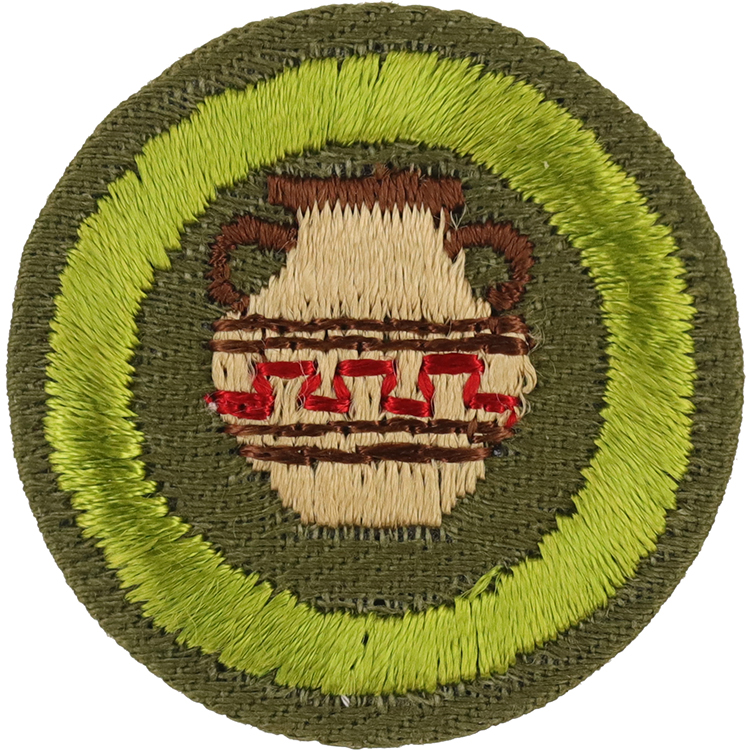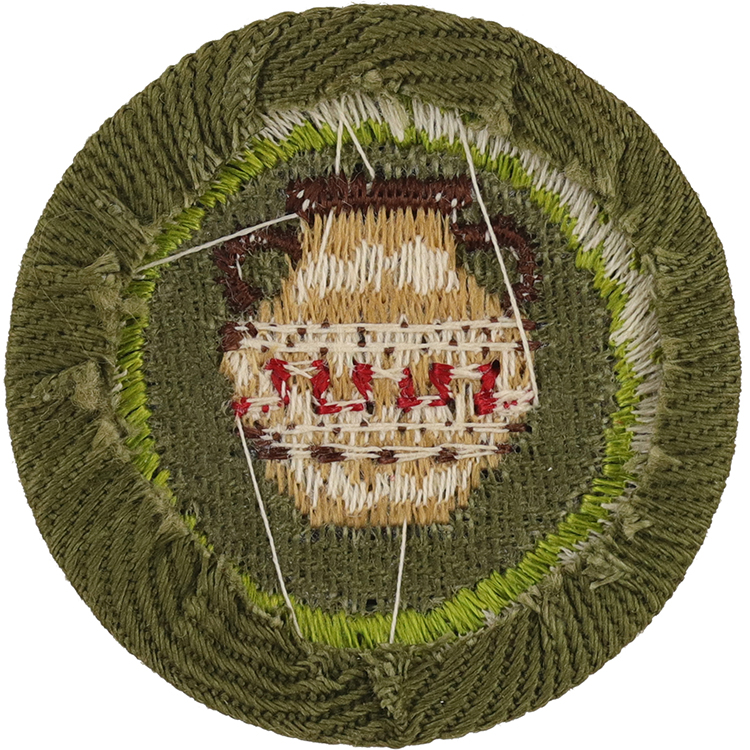
Fig. 1: Potter-E2-Front
- Cloth: Khaki right twill
- Embroidery: Cotton lock stitch

Fig. 2: Potter-E2-Reverse
- Back: Plain NO imprint with starch
Item Name: Pottery 1947 - 1960
Item ID: Potter-E2
Collector Rating: 1
Requirements April 1932 until February 1955
1. Write an essay of about 500 words describing (a) The nature of pottery and the materials used in making it; (b) The wares of one of the following people or places: Greece, Delft, Damascus, Sevres, Luca Della Robia, Josiah Wedgwood.
2. Describe the purpose, preparation and application of a glaze.
3. Draw two pottery forms, one of which must be decorated.
4. Design and build by hand a pottery form such as a vase or bowl to be fired and glazed.*
5. Design and make a panel of four decorated tiles, to be fired and glazed.*
* The firing and glazing need not be done by the Scout himself.
Requirements February 1955 until June 1972
1. Explain the properties and ingredients of a good clay body for craft pottery.
2. Make and submit two drawings of pottery forms, to be on paper at least 8 1/2 by 11 inches. One must be a recognized pottery type, such as American Indian, Greek, or Chinese. The other must be of your own design.
3. Explain the meaning of any eight of the following terms, as applied to pottery: bat, wedging, throwing, leather dry, bone dry, green ware, bisque or biscuit ware, terra cotta, grog, slip, earthenware, stoneware, porcelain, pyrometric cone, glaze.
4. Do any three of these, the pieces to be painted, glazed, or otherwise decorated by you and approved by your counselor: (a) Make a flat tray or dish. (b) Make a box or similar item, using the slab method. (c) Make a vase or jar, using the coil method. (d) Make different tiles of original design. (d) Make a human or animal figurine or decorative book ends. (f) Throw a simple vase on a potter's wheel. (g) Make an acceptable pottery form and help to fire it.
5. Submit a rough sketch of a potter's wheel and tell how it works.
6. Explain the scope of the ceramic industry in the United States and tell some of the items produced, exclusive of craft pottery. or Visit a pottery, brickyard, ceramic plant, trade school, or workshop; take notes on pottery processes; and describe your visit.


